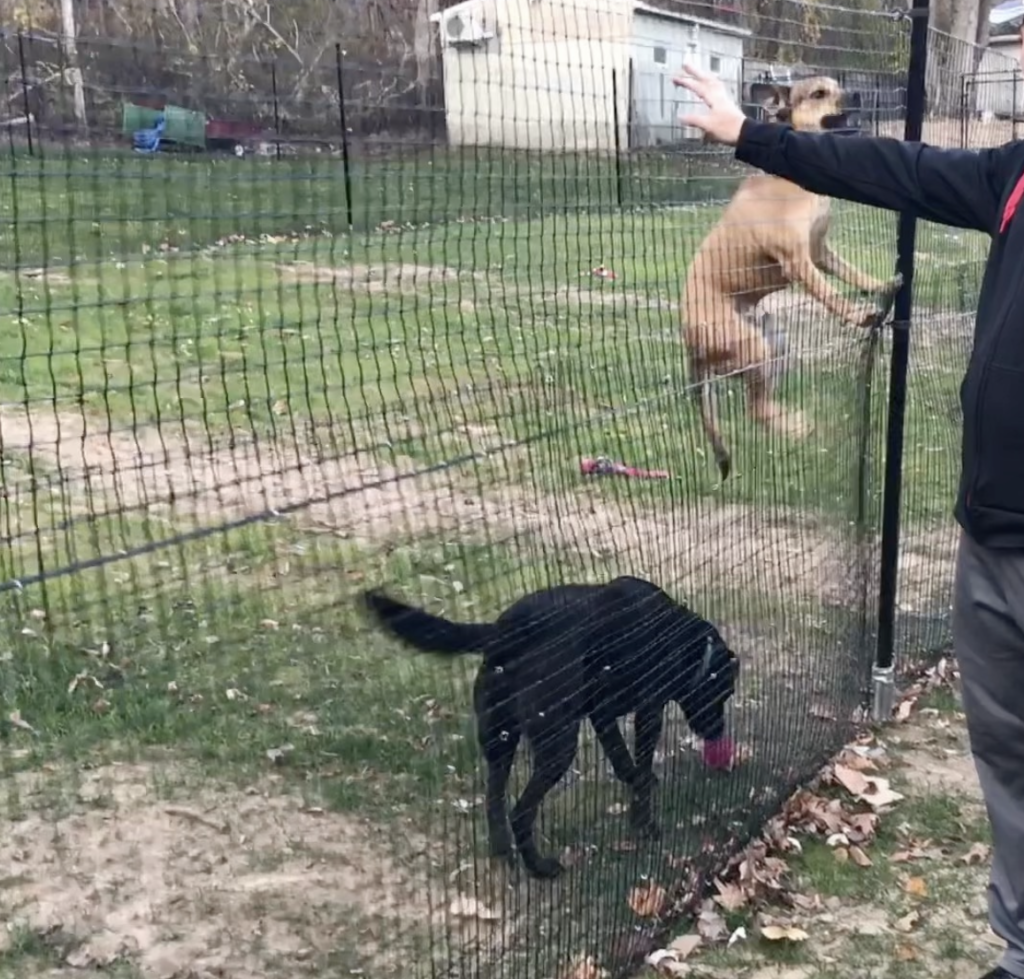Responsible pet ownership entails a paramount duty – ensuring the health and happiness of our beloved four-legged companions. A critical component of their overall well-being revolves around the need for consistent exercise. However, it raises the pivotal question: what is the ideal amount of exercise for our canine companions? This article aims to explore the factors that underpin a dog’s exercise needs and offer guidance to assist you in determining the optimal level of physical activity for your furry friend.
The importance of exercise
Exercise is vital as it promotes physical fitness, mental stimulation, and emotional well-being. It helps maintain a healthy weight, strengthens muscles and joints, and prevents behavioral issues caused by boredom. Regular exercise for dogs is essential for a happy and balanced life, contributing to their overall health and longevity.
Understanding your dog’s breed and their exercise needs
High-Energy Breeds:
Certain dog breeds are renowned for their boundless energy levels. These dogs thrive on activity and adventure. Breeds like Border Collies, Labrador Retrievers, and Siberian Huskies fall into this category.
High-energy breeds need a substantial 60-90 minutes of vigorous exercise every day to remain content and physically fit.
Engaging activities such as a game of fetch, running alongside a bicycle, or agility training can help these dogs burn off their excess energy effectively.
Medium-Energy Breeds:
While not as hyperactive as their high-energy counterparts, medium-energy breeds still require a significant amount of physical activity to stay happy and healthy. Examples of medium-energy breeds include Golden Retrievers, Boxers, and Beagles.
Plan for approximately 30-60 minutes of daily exercise to keep medium-energy breeds content.
Achieve this exercise through a combination of regular walks, playtime in the yard, and interactive toys that stimulate their minds and bodies.
Low-Energy Breeds:
Some dog breeds are more laid-back and sedentary, requiring minimal physical activity. Breeds like Bulldogs, Basset Hounds, and Shih Tzus fall into the low-energy category.
Low-energy breeds may only need a modest 15-30 minutes of exercise each day to maintain their well-being.
Short leisurely walks and gentle play sessions are usually sufficient to meet their exercise needs and prevent excess weight gain.
Age and Health Considerations

Age and health are critical factors that influence a dog’s exercise requirements, and tailoring their activities to their life stage is essential for their overall well-being:
Puppies:
Higher Energy Levels: Puppies are brimming with boundless energy, driven by their curiosity and eagerness to explore the world around them.
Exercise Recommendations: For puppies, it’s crucial to provide them with sufficient exercise to support their growth and development. However, their young bodies are still developing, so care must be taken not to overexert them.
Frequency and Intensity: Aim for short, frequent play sessions throughout the day rather than long, strenuous activities. Gradually increase the intensity of their exercises as they grow and develop strength.
Adult Dogs:
Varied Needs: The exercise needs of adult dogs can vary widely depending on their breed, size, and individual activity level.
Regular Exercise: Regardless of these variations, all adult dogs benefit from regular exercise to maintain physical fitness and mental stimulation.
Exercise Routine: Establishing a consistent exercise routine, including daily walks and playtime, is essential. These activities not only keep them physically fit but also prevent boredom and destructive behavior.
Senior Dogs:
Reduced Mobility: As dogs age, their mobility and energy levels tend to decline, making exercise less demanding but still essential for their health.
Exercise Adaptation: For senior dogs, opt for gentle walks and low-impact activities that are easier on their aging joints and muscles.
Mindful Monitoring: Keep a close eye on your senior dog during exercise. If they show signs of fatigue or discomfort, it’s essential to adjust their routine accordingly.
Quality Over Quantity: While the quantity of exercise may decrease, maintaining the quality of their daily activities remains crucial for their mental and physical well-being.
Dog Exercise Ideas
Many dog owners wonder about the daily exercise needs of their furry companions. Additionally, those with high-energy breeds often ask how best to keep their dogs active. Here are some valuable tips:
Walking Your Dog:
A daily walk around your neighborhood is an excellent starting point, especially for breeds with lower exercise demands. It may suffice for breeds with lower exercise requirements, but dogs appreciate variety in their routines.
Hiking:
Dogs share your love for the great outdoors, so consider taking them on your hiking adventures or exploring local parks and trails.
Cycling Together:
While not suitable for all dogs, many can safely accompany their owners on bike rides. Look for safe bike paths in your area.
Skating with Your Dog:
Whether you enjoy inline skating, Rollerblading, or skateboarding, your dog can join you. Start in an enclosed area when introducing them to this activity and prioritize safety with appropriate gear.
Swimming:
Many dogs adore water, and swimming provides excellent low-impact exercise, especially beneficial for dogs with joint issues. A life jacket can help prolong their time in the water and ensure an optimal cardio workout.
Fetch Games:
Make fetch more exciting by adding challenges such as uphill retrieves or water-based fetching. Vary the toys used, including balls, flying discs, or other beloved items, to keep your dog engaged.
Obedience Training:
Obedience work offers both mental stimulation and exercise. Practicing recall, retrieving, and reinforcing basic commands can be an enjoyable and beneficial activity for your dog. Additionally, teaching them new tricks like weaving and spinning adds fun to training.
Indoor dog exercises
When bad weather keeps you and your furry friend indoors, there are still plenty of indoor dog exercises to keep them active and healthy. Running up and down the stairs is an effective way to build muscle, but be cautious with certain breeds. Engaging games like hide-and-seek and chase offer both physical and mental stimulation. Consider investing in a dog treadmill for high-energy breeds, though it’s not a substitute for outdoor walks. Tug-of-war is an enjoyable muscle-building game that strengthens the bond between you and your dog. And for agility enthusiasts, you can create an indoor agility course using household items or join a local club with an indoor facility.
Mental exercises
Mental exercise is a crucial aspect of a dog’s overall well-being, burning as much energy as physical activity and offering behavioral benefits. You can engage your dog’s mind with simple yet effective mind-body games using everyday items at home.
Mental Exercise Ideas for Your Dog:
- Hide and Seek: Hide treats or objects around the house to stimulate your dog’s senses, improve recall skills, and provide mental and physical exercise. It can also help alleviate separation anxiety.
- Box Games: Use cardboard boxes to create nose games. Hide treats in one box among several, allowing your dog to use their sense of smell to find the reward.
- Training Days: Devote time to training sessions to address undesirable behaviors or work on specific skills. For example, practice door manners to prevent door-dashing incidents, focusing on sitting and staying when the doorbell rings.
Signs your dog may need more exercise
Determining whether your dog requires more exercise may involve some trial and observation. While breed-specific energy levels can provide a rough guideline, individual variations are significant. It’s essential to understand your dog’s unique needs and make adjustments accordingly.
Experimenting with different exercise levels is key. If your dog consistently initiates play when you’re trying to relax or engages in unwanted behaviors like trash raiding or excessive chewing, it might signal a need for more exercise. Nighttime restlessness can also be an indicator, as dogs generally sleep during this time.
- Restlessness: If your dog seems unusually restless, constantly pacing, or unable to settle down, it may be a sign of pent-up energy.
- Excessive Barking or Whining: Dogs may bark or whine excessively when they’re bored or have excess energy to burn.
- Destructive Behavior: Chewing furniture, shoes, or other items can be a result of boredom and lack of physical activity.
- Weight Gain: Unexplained weight gain or obesity in your dog can be a sign of inadequate exercise and excess calorie consumption.
- Attention-Seeking: Dogs may seek attention by nudging, pawing, or bothering you when they are not sufficiently mentally or physically stimulated.
- Digging or Escaping: Digging in the yard or attempting to escape can be a sign of frustration or a need for mental and physical stimulation. It’s essential to ensure that your outdoor space is secure with a suitable fence to prevent escape attempts.
- Excessive Sleeping: While dogs do need their rest, if your dog is sleeping excessively during the day, it may be due to a lack of activity.
- Lack of Interest in Toys: If your dog loses interest in toys or playtime, it could be a sign that they are not mentally engaged or physically tired.
- Reduced Appetite: Lack of physical activity can affect a dog’s appetite, leading to a decrease in food consumption.

In summary, responsible pet ownership requires understanding and meeting your dog’s exercise needs. Exercise is crucial for their physical and mental well-being, preventing behavioral issues and promoting overall health.
Tailoring exercise routines based on breed, age, and energy level, while also incorporating mental stimulation, ensures a happy and balanced life for your furry friend. Recognizing signs that your dog may need more exercise and making necessary adjustments further contributes to their happiness and longevity as cherished companions.






































